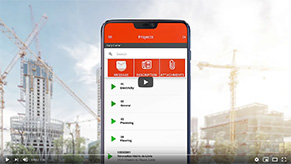
21 September, 2022
SHARE
How to make payroll easier
Managing payroll effectively is one of the main challenges faced by HR departments in any industry. Not only is the appropriate management of payroll very time-consuming, but the large number of complex tasks that must be fulfilled can cause confusion, dissatisfaction, and even problems with the law.
Payroll processing is made up of several underlying procedures. A business must keep accurate records of all relevant documentation and devise workplace strategies to better handle employee paychecks, bonuses, and deductions. Furthermore, it is crucial to stay up-to-date with labor laws in order to reassure employees and governments that your business respects the law.
What is the purpose of payroll?
Payroll is extremely important because it is the main driver of employee motivation. Paying employees their full salary on time ensures that there is mutual trust between employers and the labor force. In addition, effective payroll management reflects well on a business’s reputation and financial stability.
What is employee time clock software?
What are the challenges in payroll?
Many aspects of payroll processing are considerably complex. Not only do companies have to fulfill their duties to salaried employees, they must also be compliant with the law by paying payroll taxes and fulfilling other critical processes. For example, they must calculate working hours precisely, manage timesheets and maintain accurate employee records.
7 tips to make payroll processing easier
1. Invest in a time clock app
Accurate tracking of employee hours is indispensable for effective payroll management. After all, knowing when and how much your employees are working is necessary to effectively issue employee paychecks. However, keeping track of the hours worked by every single employee on a consistent basis is a very strenuous and time-consuming task. The best way to adhere to an accurate and consistent pay schedule is to invest in time management software.
The features of a state-of-the-art time clock app allow you to precisely monitor your employees’ work day, including overtime hours and other variables that are relevant to their schedule. The software can also be used to maintain accurate records of an employee’s time off, sick leave, and other interruptions of their duties. Having this information at hand allows companies to deploy easier and faster payroll processing.
Employee time tracking software
2. Value the expertise of payroll talent
The world is facing a talent deficit. According to extensive research performed by Korn Ferry, 85 million jobs may go unfilled by 2030 because there will not be enough skilled workers to fill them (source).
According to Yannick Binvel, president of Korn Ferry’s Global Industrial Markets, “Governments and organizations must make talent strategy a key priority and take steps now to educate, train, and upskill their existing workforces”. In today’s uncertain market environment, it is important to value one’s skilled workforce and take strides towards helping them improve their skills.
A lack of skilled workers poses a double challenge to HR departments. Not only is the job of finding capable employees going to become harder, but finding individuals with the talent to do it is going to become harder as well.
The following strategies can be used to attract, nurture, and retain talent:
- Offer competitive salaries and good working conditions: A good salary is an effective way to attract and retain the best talent. If employee payments or payroll frequency are compromised, then employee morale will be drastically lowered. Likewise, many employees are attracted to certain perks such as the ability to work remotely.
- Give employees opportunities to develop their skills: Investing in training programs and creating opportunities for workers help strengthen their loyalty to the company. Workers feel valued by a workplace that’s interested in their career development.
- Leverage powerful payroll systems: Another way to address payroll service issues is to use specialized payroll systems to empower current HR talent to work more effectively. For instance, by using a central work schedule management tool, employers can centralize scheduling operations and by so doing, make payroll easier.
3. Create a steady payroll schedule
It becomes much easier to measure and issue employee wages if there is an organized payroll calendar in use. A functional payroll schedule also benefits employees in several ways. For instance, a steady payroll schedule will let everyone know when employee time cards are due. Likewise, a payroll schedule can ensure that all employees, including hourly workers, can have accurate information about how and when they get paid.
At its most basic level, a payroll schedule can be created by using a regular calendar as a guide. When looking at the calendar, one can devise the key dates of the month while also keeping an eye on special dates, such as holidays. It is important to be aware of the dates that might place a strain on payroll processing, so one can plan accordingly.
In order to satisfy the needs of employees, a payroll schedule should show all the pay periods within the year. This will help mitigate confusion about employee gross pay, time frames, and similar queries. Companies implementing this method must always keep templates of their payroll schedule at hand, as they will have to be redistributed on a periodic basis.
Nonetheless, these tasks can also be accomplished using the right software tools. Thanks to novel work schedule management solutions, companies can delegate all scheduling tasks to artificial intelligence. By taking on the role of a personal assistant, employee management software can aid HR teams with all the documentation they need for easy and accurate payroll activities.
How to tactfully make sure your employees are working
4. Ensure the scalability of payroll processing operations
Even if your company can make payroll simple for the current scale of your operations, it may not be able to continue doing so, once your business begins to grow. Setting up a payroll system that fulfills the needs of HR and can seamlessly comply with tax payments is a challenge for companies of all types and sizes. Companies expanding on an international scale are particularly vulnerable to the challenges related to business escalation.
When working with an international workforce, a company may need to keep track of different currencies and offer certain information, such as employee paychecks, in several languages. Furthermore, tax filings may differ depending on the country. In fact, sometimes different areas within a single country can have their own distinct tax regulations.
The complexities related to expanding payroll operations can be mitigated with the use of a centralized system to manage payroll. By having access to an intuitive digital hub with a variety of novel tools and features, employers and HR professionals can automatically coordinate payroll procedures on an international scale.
Embracing centralization for payroll management gives companies better insight into their international payment requirements. It also increases the agility and smoothness of payroll activities. By intertwining payroll software with HR tools and speeding up communication between teams, a centralized payroll system enables companies to create global payroll and reporting capabilities.
Employee benefits to mobile punching
5. Always be clear and transparent with payroll management
Employee morale can be negatively impacted due to frustration with faulty payroll systems. If employee paychecks do not reflect the amount of money that employees were expecting to be paid, for instance, this can result in generalized feelings of mistrust from workers. A similar issue can arise if the personal information of employees has been wrongfully added to the records, as it can generate problems when employees attempt to retrieve their paycheck.
Your payroll policy should be clear and easy to understand. All critical matters related to payroll should be effectively communicated to employees. The following critical data points should be included within the payroll information that is available to all salaried employees:
- How employee classifications are organized within your company
- How employee salaries are determined
- How the payroll process works
- How mistakes related to payroll can be corrected
Information of this nature should be easy to obtain by your employees. It should be included in employee manuals or handbooks, as it will help create a workplace standard. A secure online portal can also be set up to give employees access to data related to their paychecks, withholdings, and benefits.
6. Keep up to date with rules and regulations
All activities that constitute the exchange of goods and services for currency are regulated by the law. If a business is not aware of the current state of wage and hour laws, tax filing deadlines, forms, regional law differences, and other regulations, then it is bound to encounter serious legal trouble. Payroll can be severely impacted by missed deadlines, penalties, and other issues caused by non-compliance with the law.
7. Use technology to the fullest
Manually processing payroll can be extremely time-consuming and mind-numbing. Manual tasks needed to successfully run payroll, such as entering the salary details of every worker, can consume a considerable amount of an HR professional’s time. Furthermore, manual filing of multiple entries can potentially lead to human error. Because payroll information is very sensitive, even honest mistakes can lead to legal trouble.
By deploying software solutions capable of handling the bulk of payroll activities, you can free your company and your HR team from a huge amount of toil and stress. Avant-garde workplace management artificial intelligence can be used not only to improve the capabilities of payroll but also to improve the management of schedules and timesheets, and for project tracking.
The implementation of the best management software can make payroll easier by offering businesses the following advantages:
- Reducing the time spent managing documents
- Managing your teams and employees more effectively
- Automatically keeping a record of employee work hours
- Helping protect the environment by reducing paper waste
- Receiving accurate, real-time data about your teams and projects
- Simplifying the creation of schedules
- Creating instantaneous work orders, quotes, performance reports, and more
- Saving a substantial amount of time and money
Thanks to the development of revolutionary methods of software deployment, technological solutions capable of improving operational efficiency can be acquired by businesses of all sizes. Affordable monthly subscription fees, secure cloud servers, and low data usage make the software incredibly accessible. Constant updates and continuous improvements guarantee that adopters of the software will see it improve with the passing of time.








